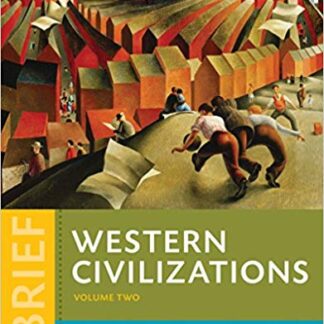Description
The Architect’s Handbook of Professional Practice 15th Edition by American Institute of Architects, ISBN-13: 978-1118308820
[PDF eBook eTextbook]
Series: Architect’s Handbook of Professional Practice
1,184 pages
Publisher: Wiley; 15 edition (November 25, 2013)
Language: English
ISBN-10: 9781118308820
ISBN-13: 978-1118308820
The definitive guide to architectural practice
Business, legal, and technical trends in architecture are constantly changing. The Architect’s Handbook of Professional Practice has offered firms the latest guidance on those trends since 1920.
The Fifteenth Edition of this indispensable guide features nearly two-thirds new content and covers all aspects of contemporary practice, including updated material on:
– Small-firm practice, use of technologies such as BIM, and project delivery methods, such as IPD and architect-led design-build
– Career development and licensure for emerging professionals and state-mandated continuing education for established architects
– Business management topics, such as organizational development, marketing, finance, and human resources
– Research as an integrated aspect of architectural practice, featuring such topics as evidence-based design and research in a small-firm context
The Fifteenth Edition of The Architect’s Handbook of Professional Practice includes access to a website that contains samples of all AIA Contract Documents (in PDF format for Mac and PC computers). With comprehensive coverage of contemporary practices in architecture, as well as the latest developments and trends in the industry, The Architect’s Handbook of Professional Practice continues to be the essential reference for every architect who must meet the challenges of today’s marketplace with insight and confidence.
Executive Editor Rena M. Klein, FAIA on “Five New Insights on Practice” available in the 15th edition of
The Architect’s Handbook of Professional Practice
While each edition of the Handbook delivers time-tested knowledge on best professional practices, the 15th edition also offers insights into current challenges of practice in the 21st Century. New material has been included to help owners of small and mid-sized firms succeed and expand the boundaries of what is possible in their practices.
Here are five of the most important new insights.
1. Multi-office firms are a viable option for mid-size firm expansion. The why, the how, and what to watch out for when establishing a branch office is explained by Deborah DeBernard, AIA in her article, “Developing and Managing Multi-office Firms.” The experience of a firm who did just that is described in an accompanying essay by Catherine Calvert, AIA and Wolf Sarr, AIA, “Developing and Managing a Mid-sized Multi-office Firm.”
2. Architect-led design build is possible. How can small firms participate in and benefit from this growing trend in project delivery? In his essay, “Architect-led Design Build and Architect as Construction Manager for Small Firms and Small Projects,” James Walbridge, AIA provides practical information on how to get started.
3. Architects are engaged with the non-profit sector in a variety of ways. Read David Gamble’s article, ”Architects in the Non-Profit Sector,” to gain insight into how architects are engaging in pro-bono work. “Community Design Centers In Context,” by Dan Pitera, FAIA, and “Independent Community Design Centers” by Ceara O’Leary describe how architects are involved in the work of community based design practices. An essay by Susan Chin, FAIA, the Chief Architect of Wildlife Conservation Society discusses the experience of being employed by a large non-profit.
4. Building Information Modeling can be used for small projects and by small firms. Learn how this is done from François Lévy, AIA in his article, “Small Firms, Small Projects, and Building Information Modeling.” Straightforward explanations of the technology and its usage in a small firm context are provided, sharing experience gained directly from practice.
5. Research is being integrated into practice to the benefit of users, clients, and the firm. An entire chapter is devoted to the emerging relationship between research and practice, as the profession advances through knowledge creation and evidence-based design. Travis Hicks, AIA, Mardelle McCuskey Shepley, FAIA, David Wang, PhD, among others contribute comprehensive explanations of research methods and their applications to design practice. Susan Jones, FAIA in her essay, “Research and Small Firm Practice,” describes how research can benefit every design practice.
What makes us different?
• Instant Download
• Always Competitive Pricing
• 100% Privacy
• FREE Sample Available
• 24-7 LIVE Customer Support




